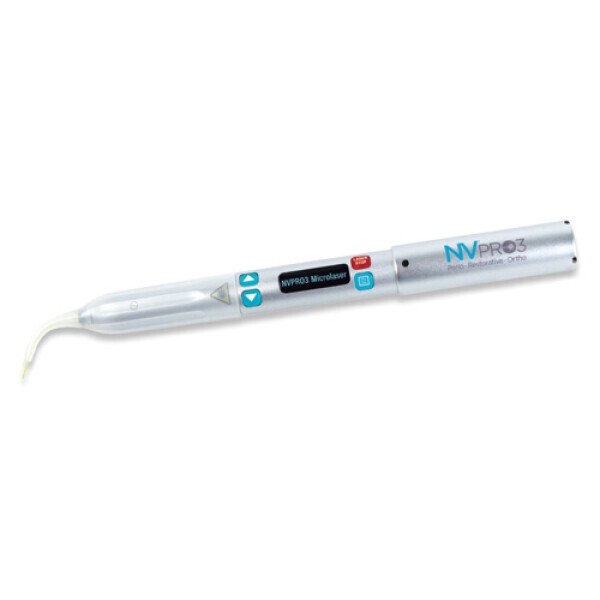Which Dental Pen Laser is Right for Me?
We take a look at dental pen lasers: The DenMat NV Pro 3 wireless pen laser and the DenMat SOL benchtop wired laser.
The use of dental lasers has undoubtedly helped to improve patient and dentist experience, with uses cases that span a broad range of regular presentations.
But this article is not about the merits of laser dentistry. Instead, we’ll compare two popular styles of laser, both from DenMat, to help you find the right fit for your practice.
Broadly speaking, dental lasers fall into two distinct styles; wireless pen lasers, and benchtop wired lasers.
Wireless Pen Lasers look just like they sound; a pen-shaped laser with display, controls, and batteries all packaged into a lightweight handpiece that can be on-hand on your dentists table, or docked into a charging station when not in use.
Benchtop Wired Lasers feature a very simple handpiece, that is wired to a benchtop console. The console features a settings and options panel, as well as containing high-capacity batteries that power the laser for longer than a wireless pen laser. The laser can operate while connected to mains power or be moved around the practice and run from the on-board batteries.
|
|
DenMat NV Pro 3
|
DenMat SOL
|
|
Laser Type |
Wireless Pen Laser |
Benchtop Wired Laser |
|
Dental Applications |
Soft Tissue Surgery Periodontal Restorative Orthodontic Hygiene |
|
|
Aiming beam |
Red |
Blue |
|
Power Output |
Up to 2 watts ± 20% |
Up to 3 watts ± 20% |
|
Operating time (at 1.2watts) |
30 minutes lasing time |
3-hour lasing time |
|
Pre-set modes |
12 pre-set modes with adjustable power settings |
3 pre-set modes (Debride, Perio & Cut) plus 1 fully customisable setting |
|
Wireless foot pedal |
Yes |
Yes |
Both lasers are incredibly versatile and have the power to perform all the soft tissue laser treatments you would need them to, though the SOL does have a little more grunt. Being a pen-style laser, the NV Pro 3 has a larger library of pre-set modes to make it simple and quick to find the right settings. Because the SOL has a benchtop console and larger buttons, it doesn’t carry so many pre-set modes, simply because changing settings is a little easier with larger buttons.
For us, the only thing to separate the two is how easy they are to have to hand during a procedure. Because it can easily fit on the dentists table, like any handpiece, the NV Pro 3 can work as a “pick up and go” tool. That said, both lasers use a wireless foot pedal, which makes them equally flexible when being shared between rooms.
Our recommendation? Give them a try! Book a demo with either Bruce Scott or Michael Sit, and see which you prefer.


